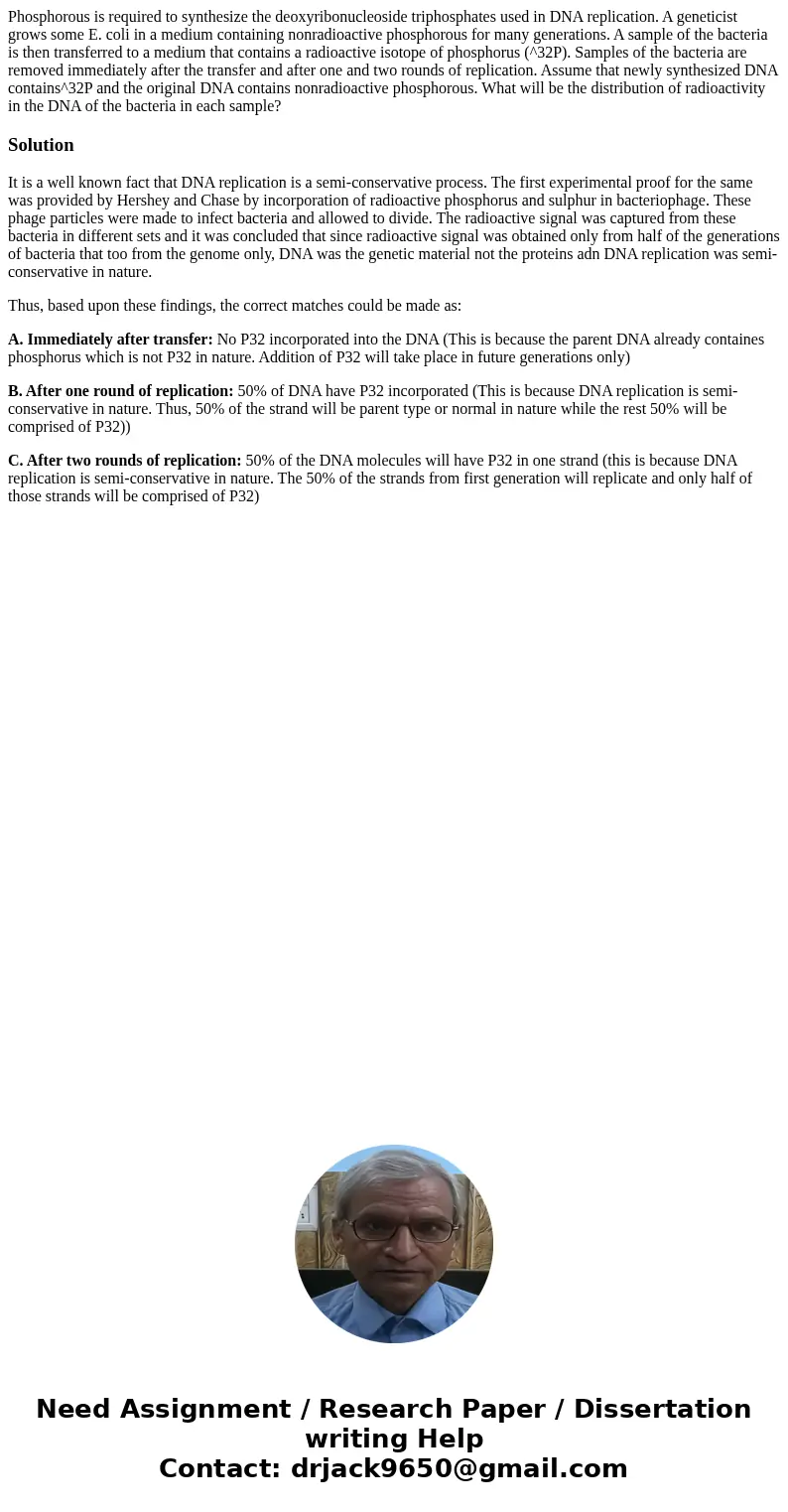Phosphorous is required to synthesize the deoxyribonucleosid
Solution
It is a well known fact that DNA replication is a semi-conservative process. The first experimental proof for the same was provided by Hershey and Chase by incorporation of radioactive phosphorus and sulphur in bacteriophage. These phage particles were made to infect bacteria and allowed to divide. The radioactive signal was captured from these bacteria in different sets and it was concluded that since radioactive signal was obtained only from half of the generations of bacteria that too from the genome only, DNA was the genetic material not the proteins adn DNA replication was semi-conservative in nature.
Thus, based upon these findings, the correct matches could be made as:
A. Immediately after transfer: No P32 incorporated into the DNA (This is because the parent DNA already containes phosphorus which is not P32 in nature. Addition of P32 will take place in future generations only)
B. After one round of replication: 50% of DNA have P32 incorporated (This is because DNA replication is semi-conservative in nature. Thus, 50% of the strand will be parent type or normal in nature while the rest 50% will be comprised of P32))
C. After two rounds of replication: 50% of the DNA molecules will have P32 in one strand (this is because DNA replication is semi-conservative in nature. The 50% of the strands from first generation will replicate and only half of those strands will be comprised of P32)

 Homework Sourse
Homework Sourse